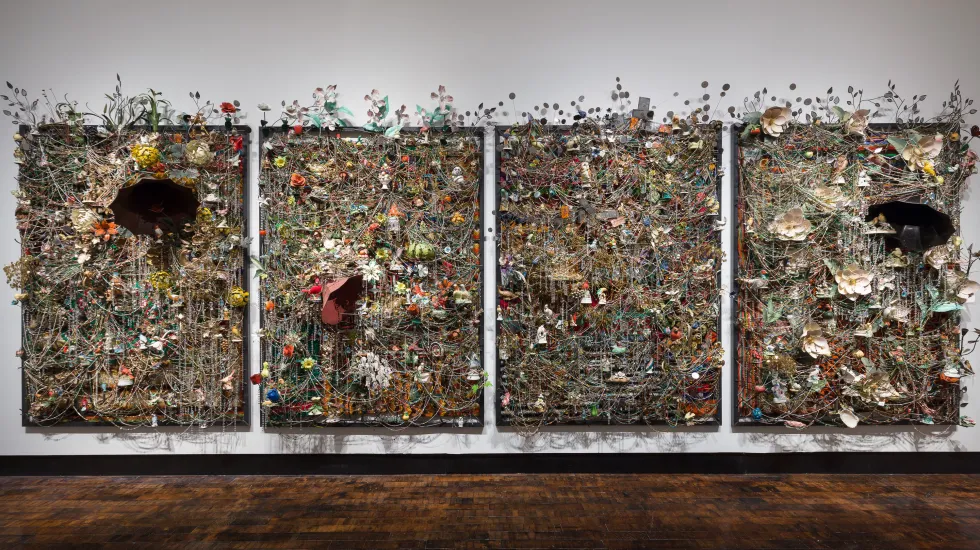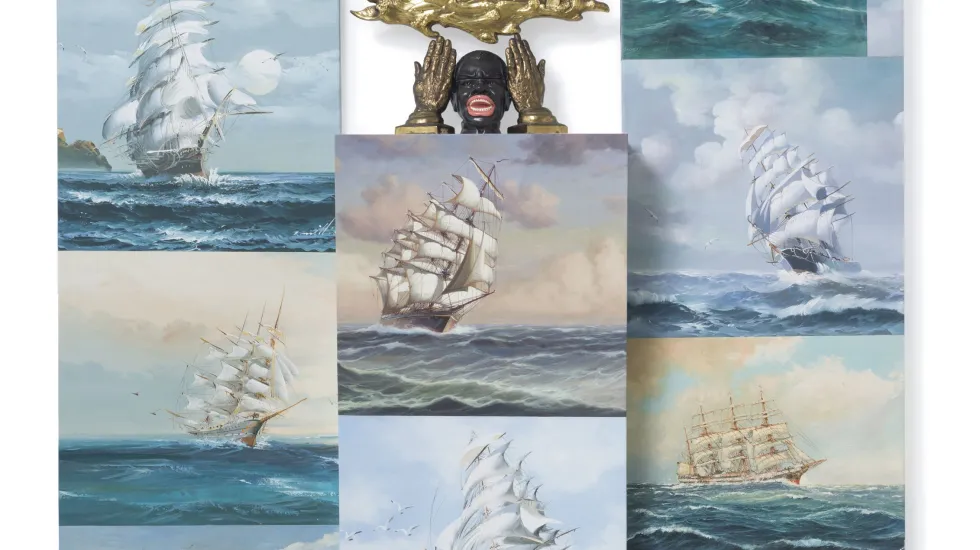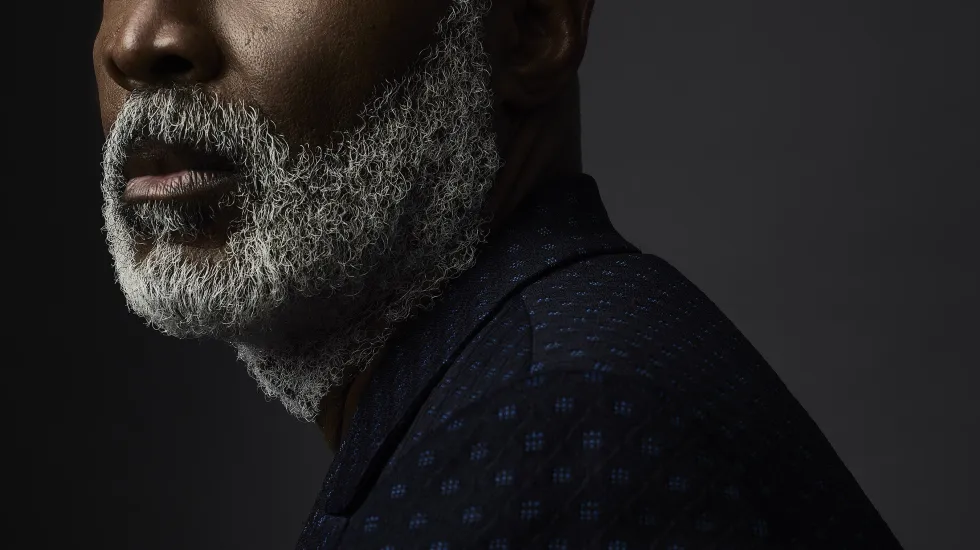
Chicago has supported a rich panorama of artists across its history, but few have built a more distinctive body of work or achieved wider fame than Nick Cave, who is known for mixed-media works that offer bright colors and tantalizing textures and possess a social-political edge.
Cave’s accomplishments are being celebrated in “Forothermore,” an exhibition that opens May 14 and runs through Oct. 2 at the Museum of Contemporary Art Chicago and then travels to the Guggenheim Museum in New York.
‘Nick Cave: Forothermore’
When: May 14-Oct. 2
Where: Museum of Contemporary Art Chicago, 220 E. Chicago
Suggested admission: $12 adults and $7 students and seniors (Tuesdays free for Illinois residents)
Info: mcachicago.org
The show, which features more than 75 works and stretches back to 1989 and Cave’s first post-student creations, is billed as his most comprehensive career survey to date and his largest show ever in Chicago.
“I’m excited about it,” the 63-year-old artist said. “I think it’s the right time. I cannot wait to get a sense of how it is going to feel and get a sense of the flow. It’s a survey show but it’s also about an experience. It’s about choreography. Everything is arranged and set up in a particular way for you to have this extraordinary journey in the mind of an artist.”
In conjunction with “Forothermore,” two of Cave’s video projections visible through Sept. 7 on the facade of the Merchandise Mart as part of the “Art on theMART” series.

In addition, Cave and his brother, Jack, have created “The Color Is,” which promotional materials describe as a “performative fashion experience.” It will be shown at a celebration gala on May 21 in the Roundhouse at the DuSable Museum of African American History and during two public performances May 22 and 23 at the museum.
“It’s a big citywide celebration of Nick,” said Naomi Beckwith, who organized “Forothermore” (a mash-up of the words “forevermore” and “other”) and has overseen its installation in Chicago. A former MCA curator, she now serves as deputy director and chief curator at the Guggenheim Museum.
Cave, a Missouri native who moved to Chicago about 30 years ago, is best known for his “Soundsuits,” exuberant, often brilliantly colored wearable sculptures. The artist adorns them with everything from buttons, doilies and hair to vintage toys, ceramic birds and other found objects mounted on soaring armatures.
These pieces can come across as fun, frothy creations, but they emerged in 1992 after Cave was deeply affected by an amateur video of Los Angeles police officers beating Rodney King after a high-speed car chase. In reaction to that traumatic incident, he developed the suits as what he has called a “second skin,” a kind of mobile refuge.
He has gone on to create hundreds of the “Soundsuits.” They have been featured in Vogue magazine and in a United Colors of Benetton promotion, and they have become a de rigueur acquisition for art museums across the country. This show features more than a dozen of the garment-sculptures from the past as well as the debut of a new series, “Soundsuits 9:29,” which were inspired by the death of George Floyd in May 2020.

“If anything,” Beckwith said, “we see that certain conditions in the world remain the same, that there is not much difference between Rodney King and George Floyd, except for the outcome. It’s the same kind of anti-Black violence that keeps rearing its head, and the message resonates throughout the show.”
Cave has developed other kinds of works, including found-object assemblages, performance art, large-scale installations and video projects, with the “Soundsuit” series always remaining a kind of artistic touchstone.
But no matter the medium, all these works, in obvious and not-so-obvious ways, confront issues like racism, injustice and police brutality.
“Nick as an artist is just invested in a social message and project as he is in a material and formal language,” Beckwith said. “I’m sure we’re going to find a lot of people not only inspired by that, but I also think it’s important to hold that up as an artistic practice, that you can be an activist through your work. That he is as much a citizen as he is an artist.”
The show begins with an installation titled “Spinner Forest” (2020), an array of mobiles made from spinning garden ornaments, and continues with Cave’s Floyd-inspired “Soundsuits” before stepping back into the artist’s history. “It’s somewhat chronological, but it doesn’t start at the beginning,” Beckwith said.
Also included are other large-scale works such as “Beaded Cliff Wall,” (2016) a kind of intricately beaded tarp draped against a wallpaper-like backdrop, and “Hy-Dyve” (2016), an enveloping 14-channel video installation.
“I’m grateful,” Cave said of the show. “I’m thrilled. I’m excited. But I’m also interested in what is next.”







